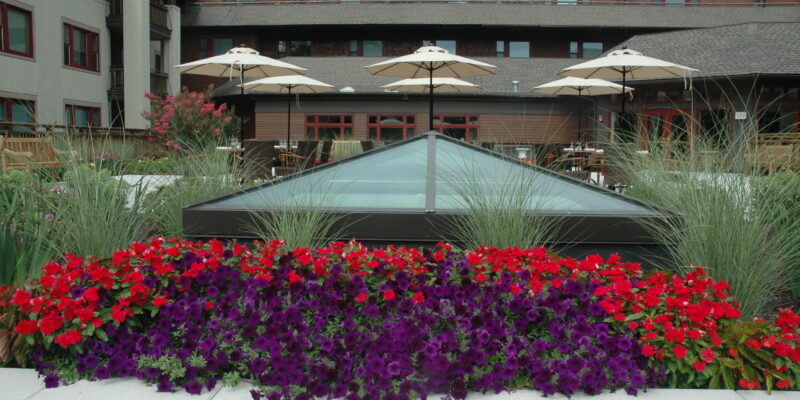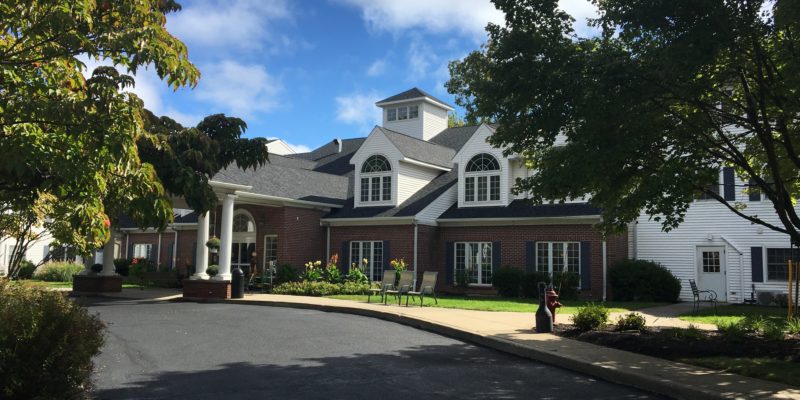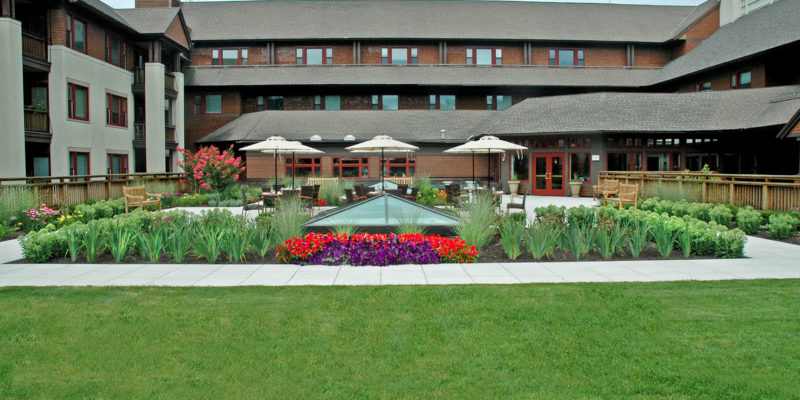As a professional in the landscape industry and someone with aging parents and in-laws, the stress of finding the right living situation for our loved ones can be overwhelming. It goes beyond financial concerns; we also aspire to place our loved ones in an environment they will truly enjoy, and it all begins with the external aesthetics.
In the domain of senior and assisted living facilities, the significance of establishing a supportive and enriching atmosphere cannot be emphasized enough. With the aging population on the rise, there is a growing awareness of how profoundly surroundings can influence the well-being of residents. An increasingly recognized focal point in this regard is the incorporation of beautiful landscapes into these facilities. Beyond mere aesthetics, a meticulously designed natural environment plays a pivotal role in elevating the quality of life for seniors.
The presence of a lush lawn, vibrant flowers, and calming water features has been proven to contribute to the overall well-being of seniors. Exposure to nature has been linked to reduced stress levels, improved mood, and enhanced mental health. In an environment where residents may face various health challenges, the therapeutic effects of beautiful landscapes become invaluable.
Access to well-maintained outdoor spaces encourages seniors to engage in physical activities, promoting a healthier lifestyle. Walking paths, gardens, and outdoor seating areas provide opportunities for light exercise and social interactions. Additionally, exposure to nature has been associated with cognitive benefits, potentially slowing down cognitive decline and improving memory.
Beautifully landscaped areas serve as inviting communal spaces, fostering social interactions among residents. Whether engaging in group activities, enjoying a family visit in a garden, or participating in outdoor events. This is vital for mental and emotional well-being.
Maintaining outdoor spaces can offer seniors a sense of purpose and engagement. Gardening clubs, outdoor yoga classes, or music events are just a few examples of activities that can be organized in these landscapes. Such activities contribute to a sense of accomplishment and fulfillment, enhancing the overall quality of life for residents.
Regular maintenance is crucial to ensure that outdoor spaces remain vibrant and welcoming. Lawns should be well-maintained, and seasonal flowers can be incorporated to provide visual variety throughout the year. Additionally, ensuring that these areas are easily accessible to all residents, including those with mobility challenges, is essential.
In the evolving landscape of senior and assisted living facilities, the incorporation of beautiful outdoor spaces is more than a luxury; it is a necessity for promoting the well-being of residents. Beyond the physical infrastructure, the beauty of nature has the power to uplift spirits, create a sense of purpose, and enhance the overall quality of life for seniors. As we continue to innovate in the realm of elder care, let us not underestimate the transformative impact that a carefully designed and maintained landscape can have on the lives of those who have contributed so much to our communities.
By Marc Angarano, ELM Client Services, North Region (Monroe CT)
Contact: sales@easternland.com



